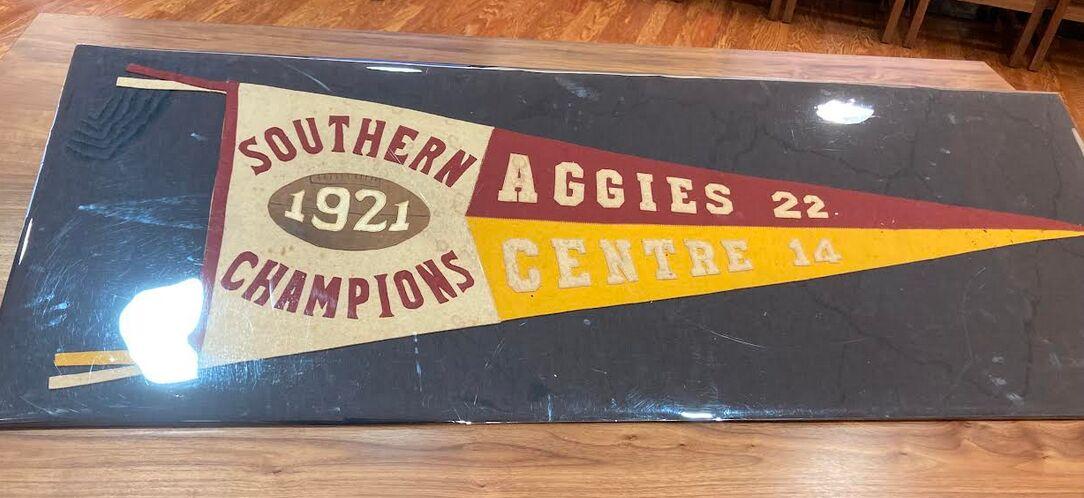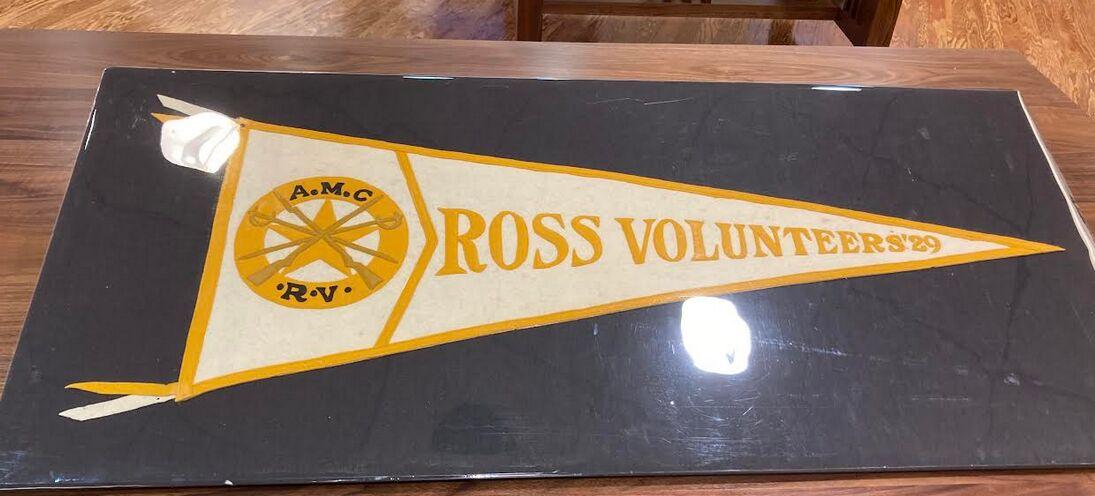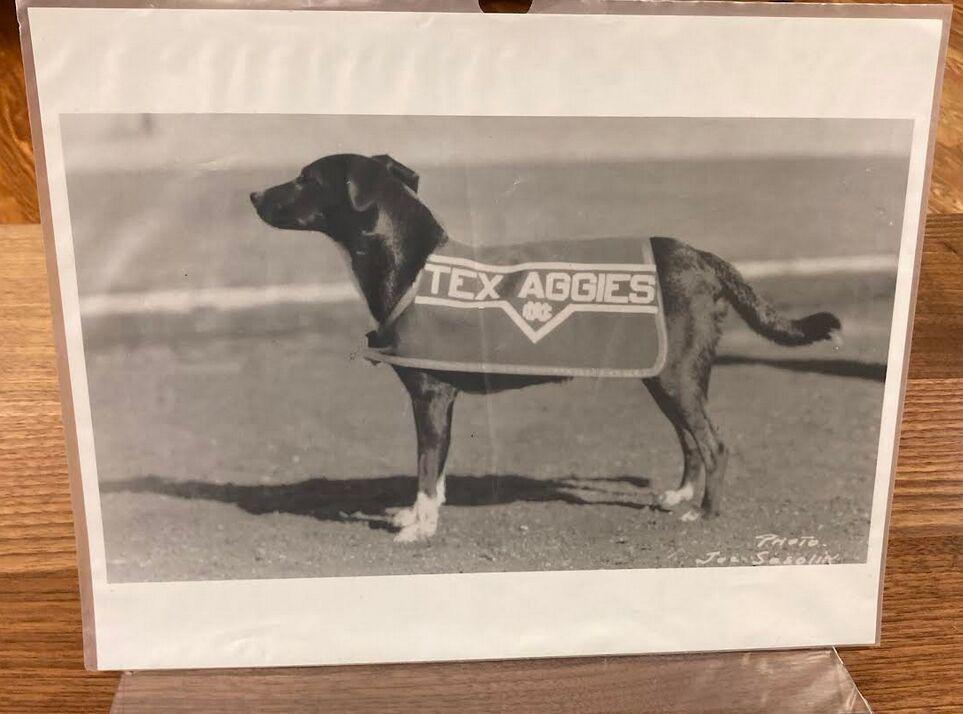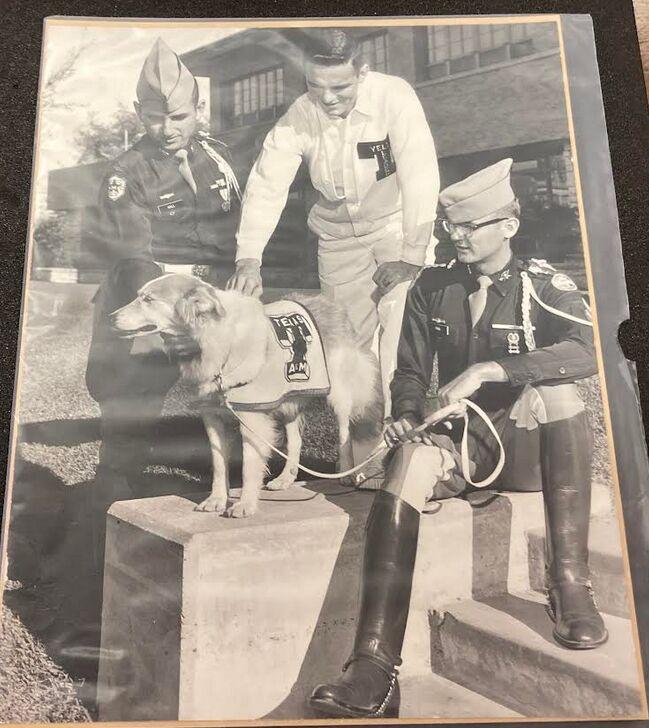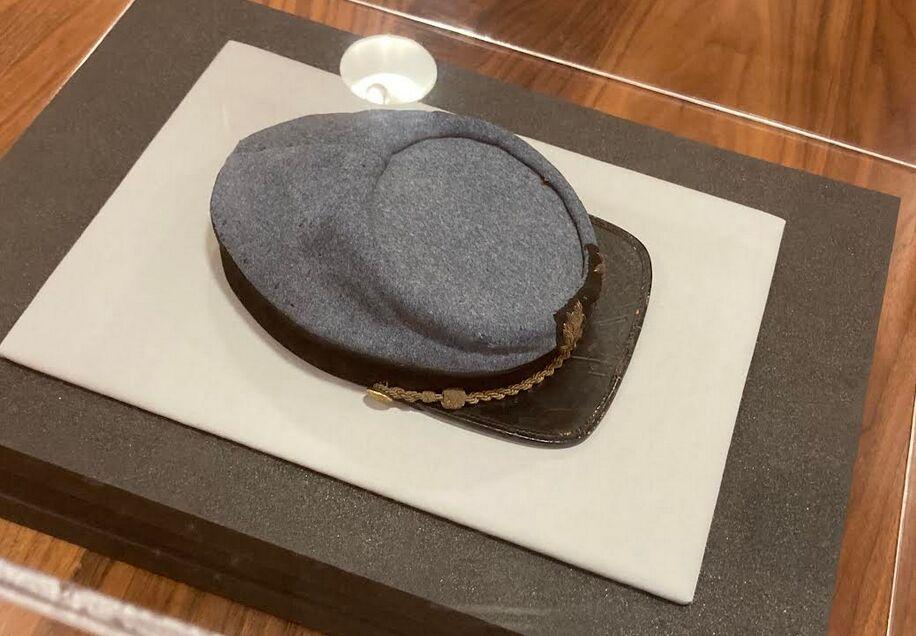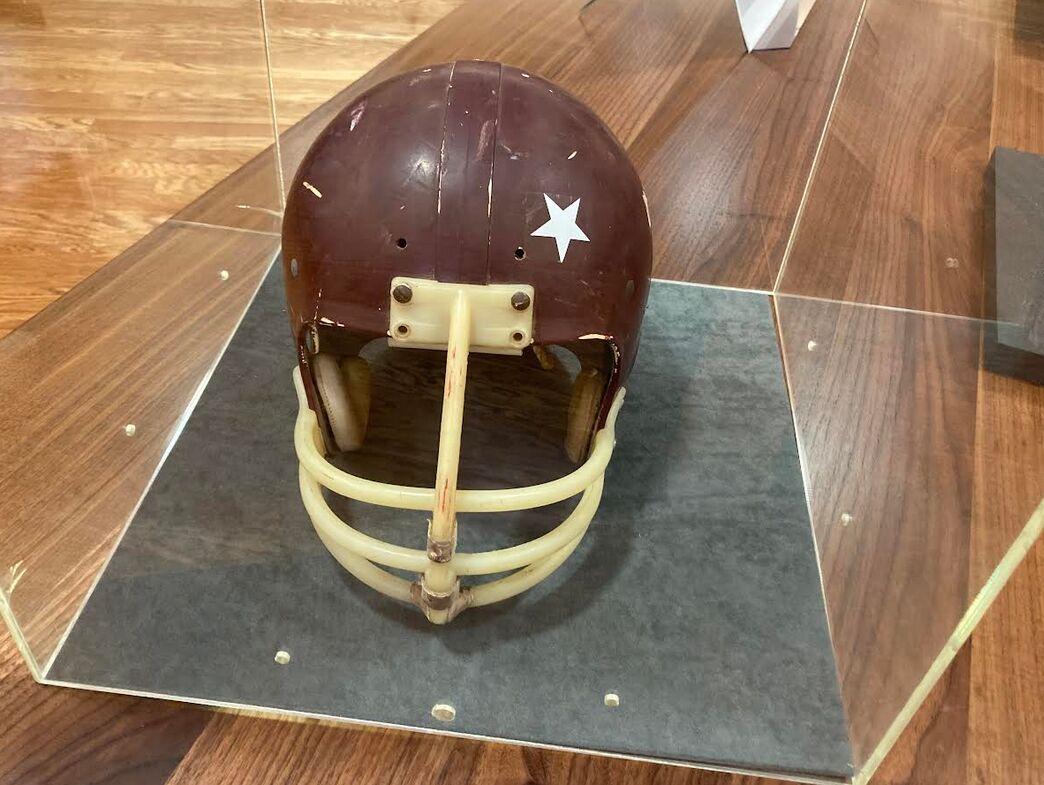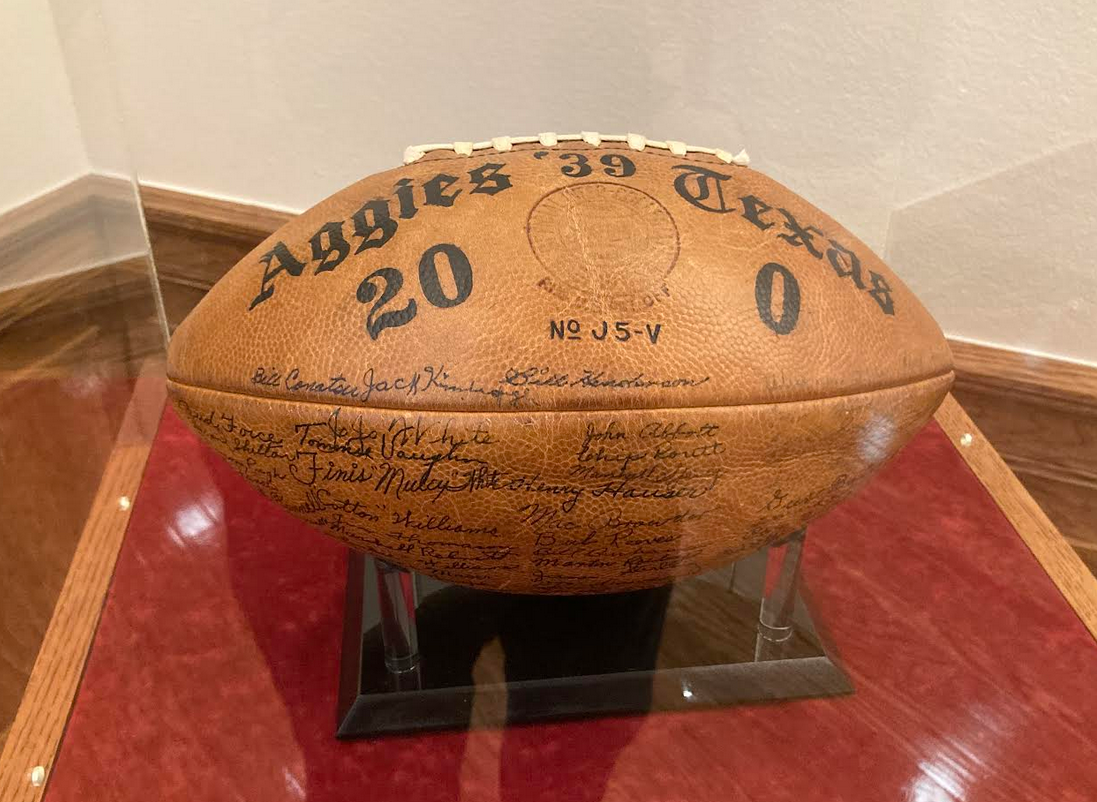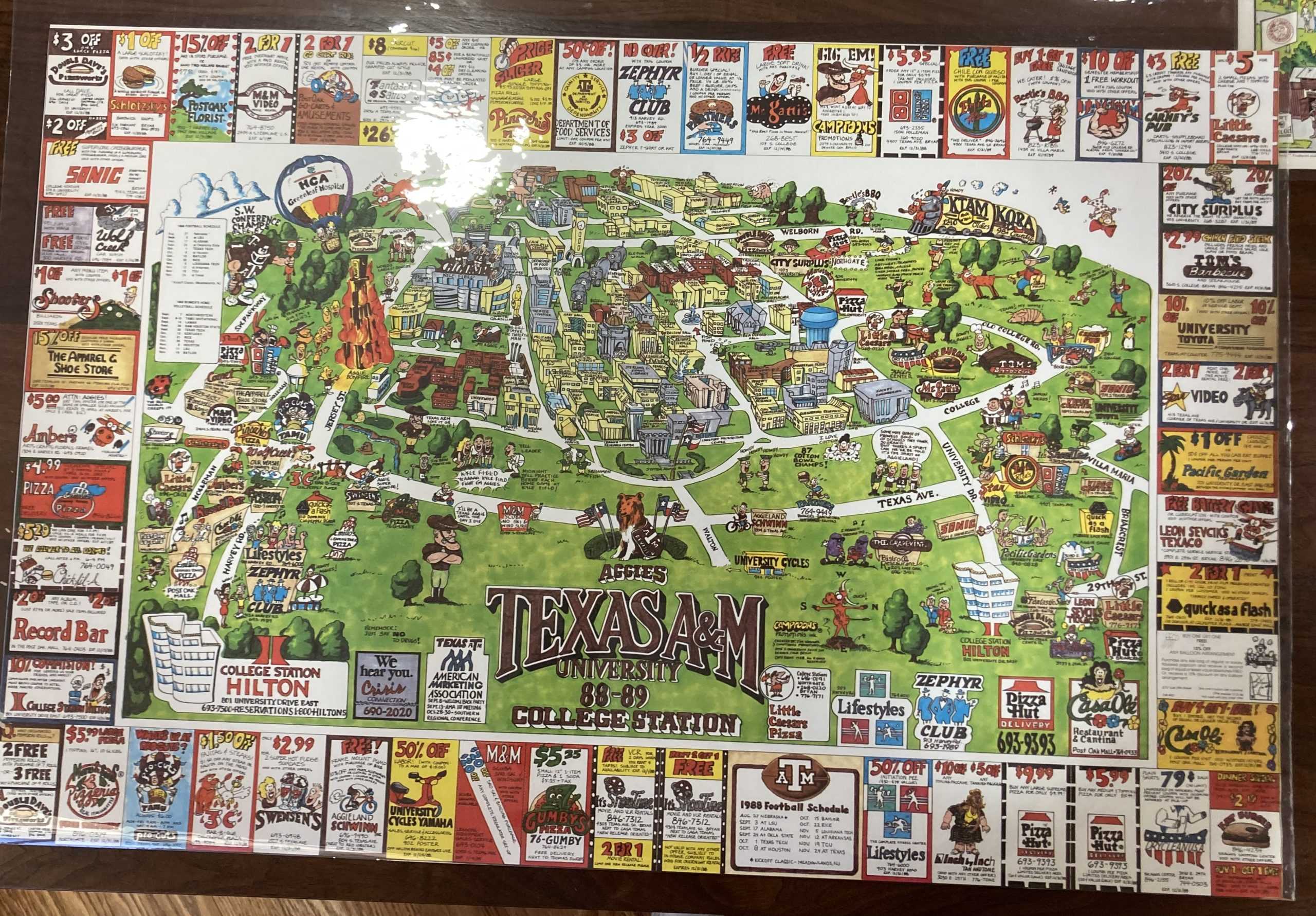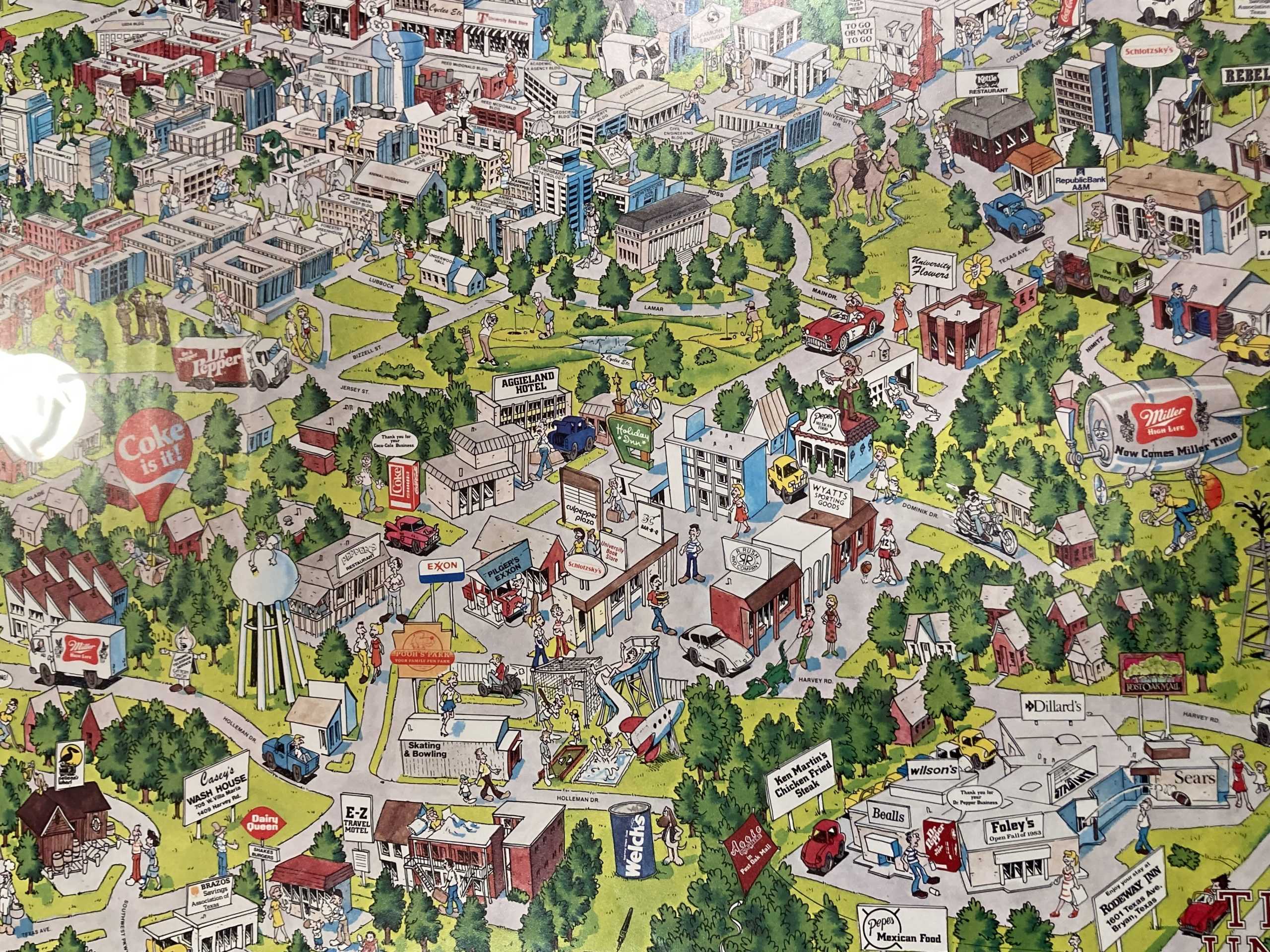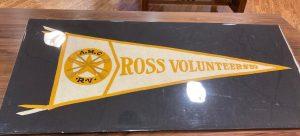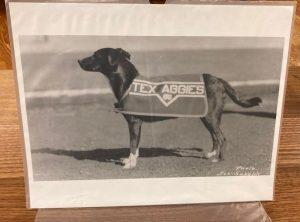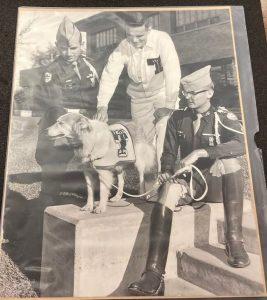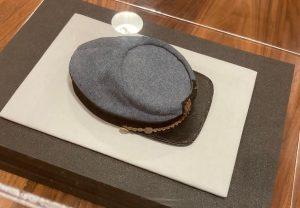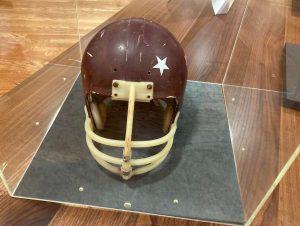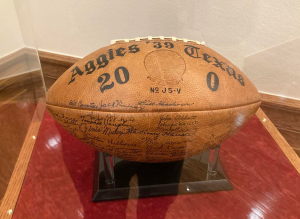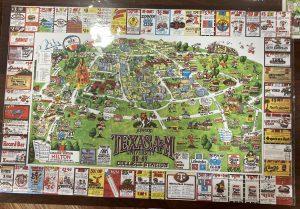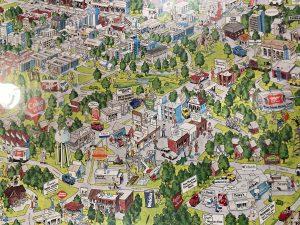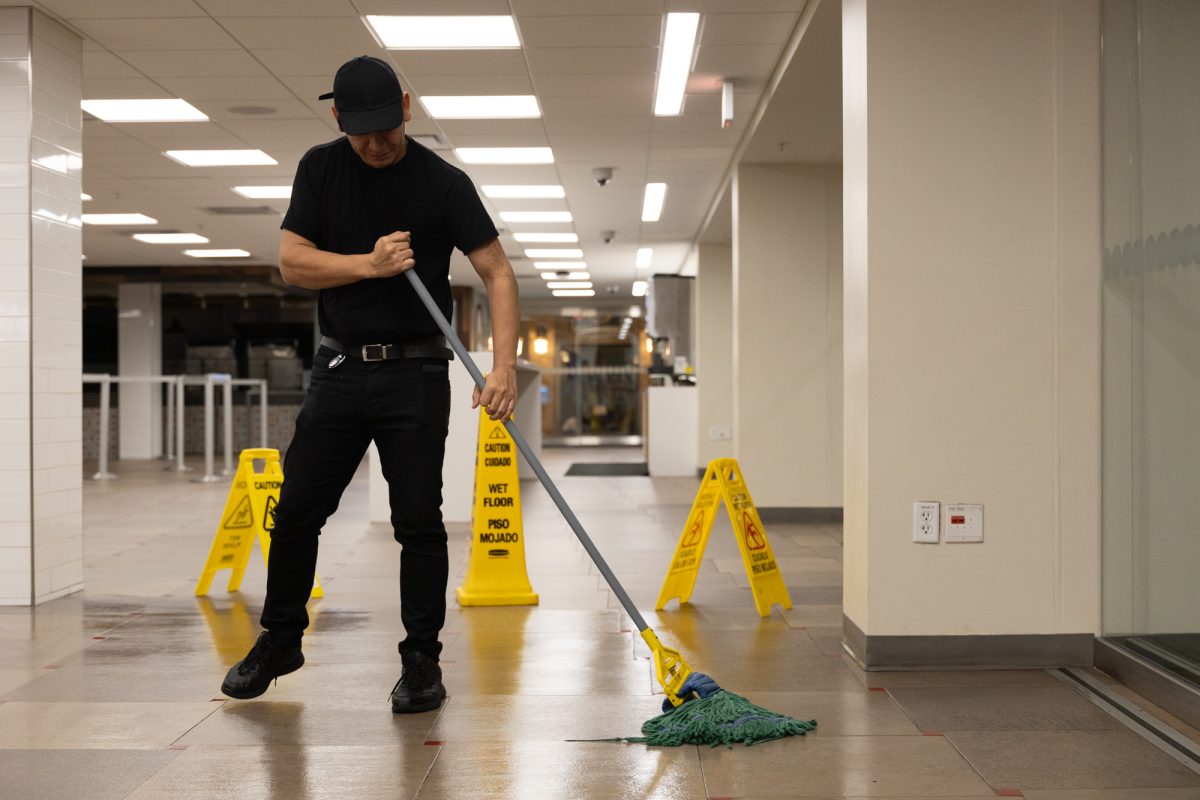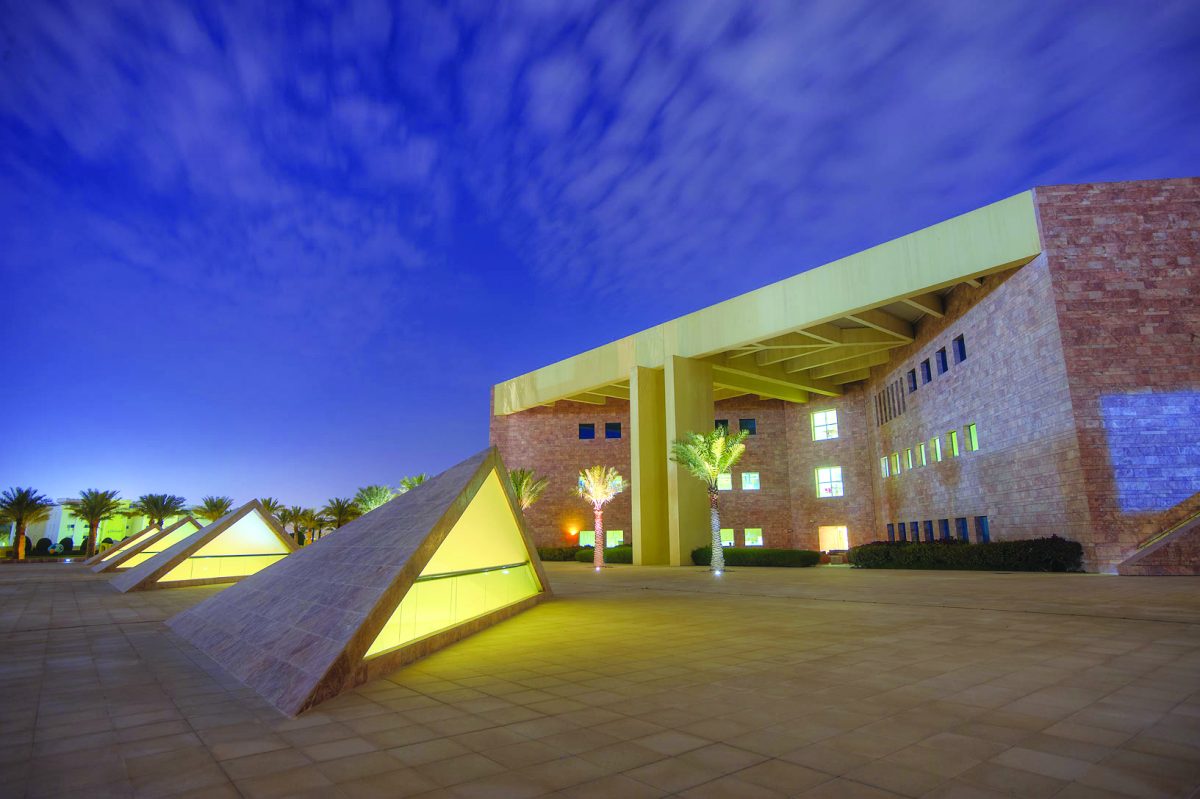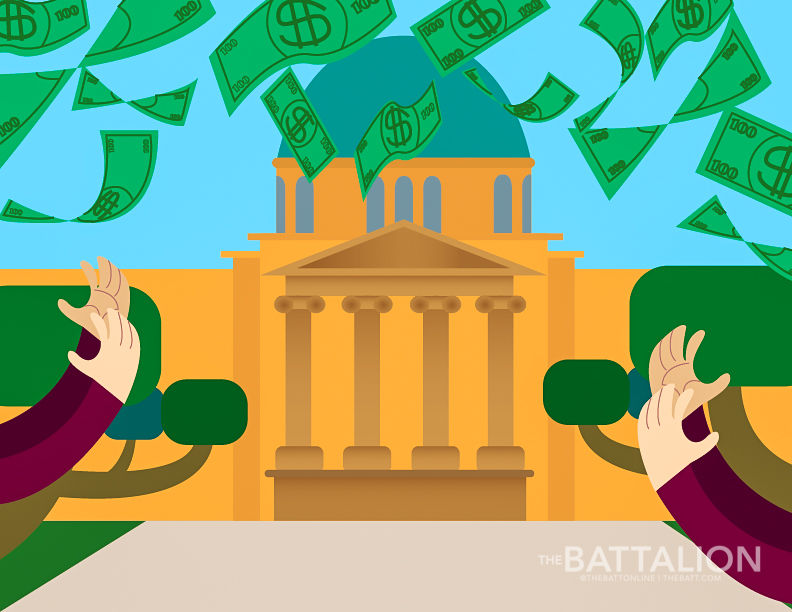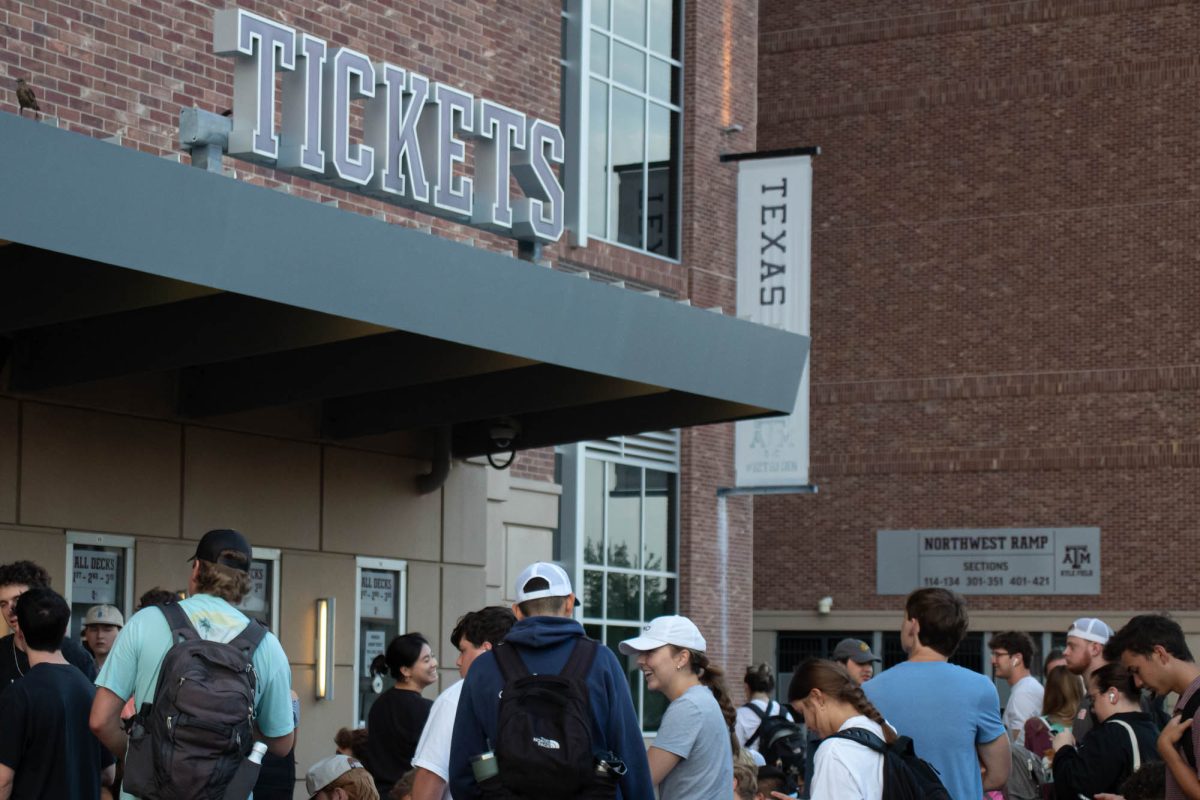On Feb. 2, as part of Aggieland Saturday, Texas A&M’s annual university-wide open house, the Cushing Memorial Library opened a temporary Aggie history exhibit.
In the early 20th century, creating pennants was a widespread trend at A&M, associate university librarian Robin Hutchison, Class of 1991, said.
“We made pennants for everything,” Hutchison said. “It was a big thing to do back then.”
The above pennant was made to commemorate the Aggies’ victory over the Centre College Colonels of Danville, Ky. in 1921, Hutchison said.
“That was actually the game where E. King Gill became the 12th Man,” Hutchison said.
The above pennant was made to commemorate graduating members of the Ross Volunteer Company, a Corps of Cadets unit that serves as the official honor guard of the governor of Texas. While pennants are typically associated today with athletic events, Hutchison said in the past, they were often made to commemorate happenings of any occasion.
“This is a pennant for the Ross Volunteers, Class of [1929],” Hutchison said. “They made a pennant for themselves too.”
The exhibit displayed the original photographs taken of Reveille I and II, both mixed-breed dogs, university archivist Krista Oldam said.
“I learned that Reveille II was a biter,” Oldam said. “You can tell they don’t look like Reveille now. Reveille III is when we transitioned to the collie.”
The following cap was part of the Corps uniform in the late 19th century. Before World War I, Oldam said, the Corps largely operated independently of the United States military.
“This is one of the caps, we call it a cabbie,” Oldam said. “We don’t know the exact date of it, but it would be what a cadet wore during 1885 to 1891. This is what a student would have worn all the way up until about World War I when the government started subsidizing ROTC programs and had more input on uniforms.”
The above helmet was once worn by a player with the surname Cortez sometime between 1965 and 1971, Oldam said. Research suggests the player was likely Robert Cortez, who was a linebacker for the Aggies and is currently inducted into the Rio Grande Valley Sports Hall of Fame.
“This helmet is from the Gene Stallings era of football,” Oldam said. “From 1965 to [1971], it was worn by a player with the last name of Cortez. You can see it did not have a lot of padding. Certainly, whoever was Cortez took a lot of hits, because you can see the A&M has gotten real smudged. The star’s completely knocked off.”
The above ball was the game ball used during the Aggies’ defeat of the University of Texas Longhorns in 1939, Oldam said. The Aggies went on to win their only national championship that season.
“This piece was actually worked on by our conservator here … it was flat and had lost all of its air and she was able to insert this little kind of bladder that she was able to fill with air and expand it back out,” Oldam said. “She did a lot of reinforcement on the top with the lacing to make it look nice and then this has also been signed by a lot of players, so she was able to go back and reinforce a lot of the signatures with a more permanent ink.”
Maps like the one above were frequently made in the 1980s to give visitors an idea of Aggieland’s amenities, Hutchison said. It was a common practice for local businesses to place coupons on the borders of the maps.
“It’s very rare to find them with the coupons intact,” Hutchison said. “People would cut them off and use them.”
Oldam said the Cushing library has considered commissioning a modern version of such a map to commemorate the 150th anniversary of A&M’s founding in 2026 with the help of the student body.
“The 150th [anniversary] is coming up, and I think we’ve schemed that we would like to recreate this for a minute,” Oldam said. “It would be fun to crowdsource folks to submit places that need to be on the map.”
Hutchison said College Station saw great change in recent years and reminisced on the Aggieland of the past.
“If you look at its campus, you can see Evans but Cushing isn’t marked, there’s the Academic Building,” Hutchison said. “Much of West Campus is not there because you know, it’s the [19]80s. It’s kind of interesting just to see how campus has changed. Bonfire’s on Duncan Drill Field, I don’t know if that exists anymore. [Kyle Field] was much smaller. You didn’t have the south end zone, it was open and there were pomegranate trees and the cannon would fire into those pomegranate bushes … There was a restaurant called the Flying Tomato, it was in Northgate. Best pizza ever.”



